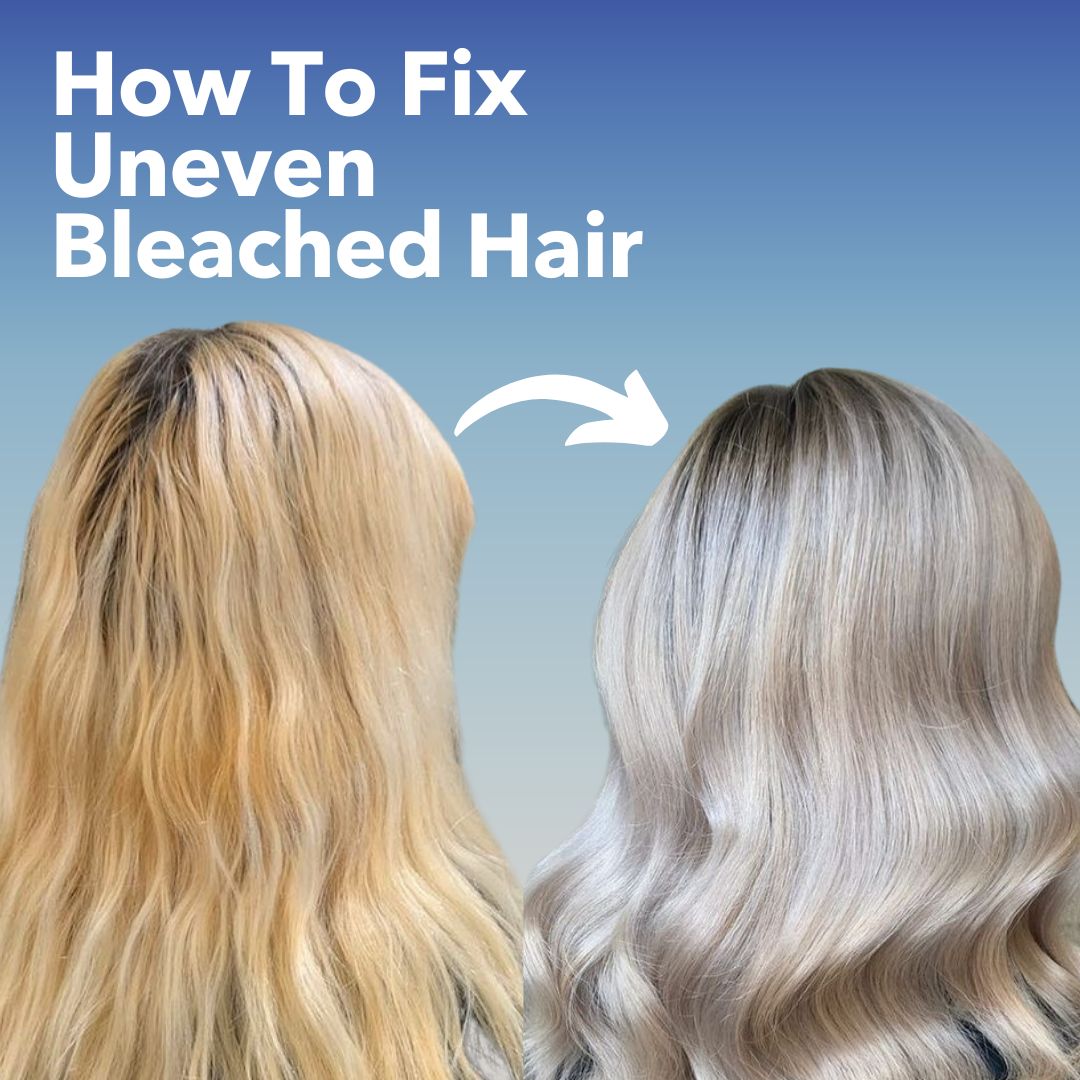Arghhh! We have all had those beginner moments of utter frustration when our bleached hair doesn’t turn out the way we wanted. And now you are staring in the mirror at your uneven bleached hair asking yourself if this is the end of your hair color dreams. Well, bestie, don’t give up just yet. We have a few fixes up our sleeves! Here’s how to fix uneven hair color after bleaching in a few simple steps.
How To Fix Uneven Bleached Hair
1. Assess the Situation
Take a moment to evaluate the extent of the unevenness in your hair color. Determine whether it's a minor issue or a more noticeable contrast. Understanding the severity will help you choose the appropriate solution.
2. Blending With A Darker Hue
Dyeing your hair with a darker shade can help neutralize and counteract the unevenness caused by bleaching. it's important to focus on the areas where the bleaching results are uneven. Apply the dye strategically to those sections, ensuring even coverage and seamless blending with the surrounding hair.
It's essential to note that dyeing your hair with a darker shade to fix unevenness is a temporary solution. As your hair grows, you may need to touch up the roots or gradually transition back to your desired lighter color. Regular maintenance and touch-ups will be necessary to maintain the desired appearance.
3. Tone Your Hair
If you notice a yellow or brassy undertone in your hair, toning is an effective way to neutralize those unwanted hues. Choose a toner with the opposite color on the color wheel to cancel out the undertone. For example, if you have yellow tones, use a purple toner. Apply the toner according to the instructions provided and let it sit for the recommended amount of time. Rinse thoroughly and enjoy the improved color balance. If you don’t have a toner, you can also try using a toning shampoo.
Shop Now
4. Spot Bleaching
For more evident unevenness, spot bleaching is the way to go. Identify the areas where the color is particularly uneven and apply bleach to those specific sections. Use a brush or an applicator to target only the areas that need further lightening. Keep in mind that bleach is a powerful chemical, so it's essential to exercise caution and follow the instructions provided. Monitor the bleaching process closely and rinse out the bleach as soon as the desired level of lightening is achieved.
Remember, spot bleaching should be approached with care to avoid over-processing and potential damage. For more complex cases, it's advisable to seek the assistance of a professional hairstylist who can ensure proper application and minimize the risk of further unevenness.
Also Read: Beginner's Guide - How to Bleach Your Hair at Home
Reasons For Uneven Bleached Hair
-
Uneven Application: One of the most common causes of uneven hair color after bleaching is the uneven application of the bleach. If the bleach is not applied evenly throughout your hair, certain sections may be over-processed while others are under-processed, resulting in uneven color.
-
Different Hair Porosity: Hair porosity refers to how well your hair absorbs and holds moisture and chemicals. If your hair has varying porosity levels, some sections may absorb the bleach faster than others, leading to uneven color results.
-
Previous Color or Chemical Treatments: If you had previous color or chemical treatments in your hair before bleaching, they can affect the outcome of the bleaching process. Residual color or chemicals can interfere with the bleaching process and result in uneven color.
- Natural Hair Color Variation: Natural variations in hair color, such as darker roots or highlights, can become more apparent after bleaching. These variations can contribute to uneven hair color if the bleach is not applied strategically to address them.
- Inconsistent Processing Time: Bleach requires a specific processing time to achieve the desired color. If the processing time is not consistent throughout your hair, some areas may be over-processed or under-processed, leading to uneven color.
Remember, achieving an even hair color after bleaching requires patience and proper technique. Understanding the reasons for uneven color can help you identify the specific areas to focus on during the correction process. If you're unsure or facing significant challenges, it's always best to consult a professional hairstylist for guidance and assistance.
Also Read: Common Mistakes You're Making When Dyeing Hair
Join @BirdsOfParadyes, our vibrant trendsetter community! Embark on an exciting style journey with us. Follow now for hair inspiration and become part of our colorful fam. Welcome on board!





